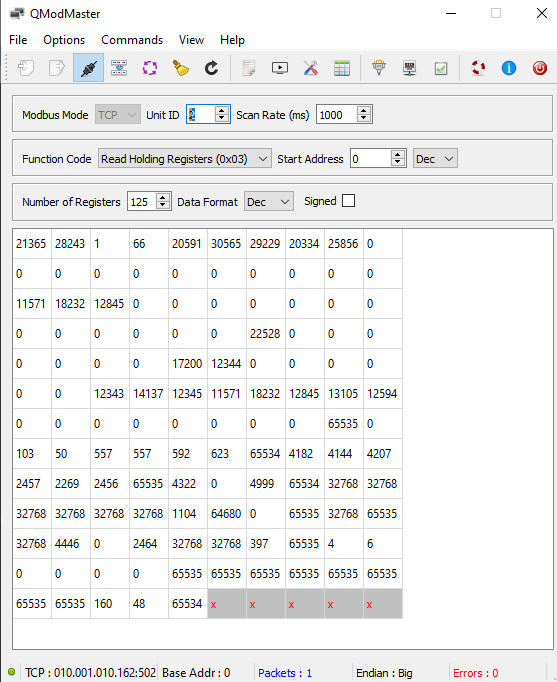I have one suggestion Johan: you could map the sensors to sensor types, so you can also associate the appropriate icon type.
Something like this:
from homeassistant.const import (
DEVICE_CLASS_CURRENT,
DEVICE_CLASS_ENERGY,
DEVICE_CLASS_POWER,
DEVICE_CLASS_TEMPERATURE,
DEVICE_CLASS_VOLTAGE,
)
SENSOR_TYPES = {
"Manufacturer": ["Manufacturer", "comm_manufact", None, "mdi:information-outline", None],
"Model": ["Model", "comm_model", None, "mdi:information-outline", None],
"Options": ["Options", "comm_options", None, "mdi:information-outline", None],
"Version": ["Firmware Version", "comm_version", None, "mdi:information-outline", None],
"Serial": ["Serial", "comm_sernum", None, "mdi:information-outline", None],
"AC_Current": ["AC Current", "accurrent", "A", "mdi:current-ac", DEVICE_CLASS_CURRENT],
"AC_CurrentA": ["AC Current A", "accurrenta", "A", "mdi:current-ac", DEVICE_CLASS_CURRENT],
"AC_CurrentB": ["AC Current B", "accurrentb", "A", "mdi:current-ac", DEVICE_CLASS_CURRENT],
"AC_CurrentC": ["AC Current C", "accurrentc", "A", "mdi:current-ac", DEVICE_CLASS_CURRENT],
"AC_VoltageAB": ["AC Voltage AB", "acvoltageab", "V", "mdi:lightning-bolt", DEVICE_CLASS_VOLTAGE],
"AC_VoltageBC": ["AC Voltage BC", "acvoltagebc", "V", "mdi:lightning-bolt", DEVICE_CLASS_VOLTAGE],
"AC_VoltageCA": ["AC Voltage CA", "acvoltageca", "V", "mdi:lightning-bolt", DEVICE_CLASS_VOLTAGE],
"AC_VoltageAN": ["AC Voltage AN", "acvoltagean", "V", "mdi:lightning-bolt", DEVICE_CLASS_VOLTAGE],
"AC_VoltageBN": ["AC Voltage BN", "acvoltagebn", "V", "mdi:lightning-bolt", DEVICE_CLASS_VOLTAGE],
"AC_VoltageCN": ["AC Voltage CN", "acvoltagecn", "V", "mdi:lightning-bolt", DEVICE_CLASS_VOLTAGE],
"AC_Power": ["AC Power", "acpower", "W", "mdi:solar-power", DEVICE_CLASS_POWER],
"AC_Frequency": ["AC Frequency", "acfreq", "Hz", "mdi:sine-wave", None],
"AC_Energy": ["AC Energy", "acenergy", "kWh", "mdi:solar-power", DEVICE_CLASS_ENERGY],
"DC_Power": ["DC Power", "dcpower", "W", "mdi:solar-power", DEVICE_CLASS_POWER],
"DC1_Curr": ["DC1 current", "dc1curr", "A", "mdi:current-ac", DEVICE_CLASS_CURRENT],
"DC1_Volt": ["DC1 voltage", "dc1volt", "V", "mdi:lightning-bolt", DEVICE_CLASS_VOLTAGE],
"DC1_Power": ["DC1 power", "dc1power", "W", "mdi:solar-power", DEVICE_CLASS_POWER],
"DC2_Curr": ["DC2 current", "dc2curr", "A", "mdi:current-ac", DEVICE_CLASS_CURRENT],
"DC2_Volt": ["DC2 voltage", "dc2volt", "V", "mdi:lightning-bolt", DEVICE_CLASS_VOLTAGE],
"DC2_Power": ["DC2 power", "dc2power", "W", "mdi:solar-power", DEVICE_CLASS_POWER],
"Status": ["Operating State", "status", None, "mdi:information-outline", None],
"Status_Vendor": ["Vendor Operating State", "statusvendor", None, "mdi:information-outline", None],
"Temp_Cab": ["Cabinet Temperature", "tempcab", "°C", "mdi:temperature-celsius", DEVICE_CLASS_TEMPERATURE],
"Temp_Oth": ["Booster Temperature", "tempoth", "°C", "mdi:temperature-celsius", DEVICE_CLASS_TEMPERATURE],
}
And I also noticed this: probably instead of the firmware/software version, you would want to put the model right above the manufacturer name.








